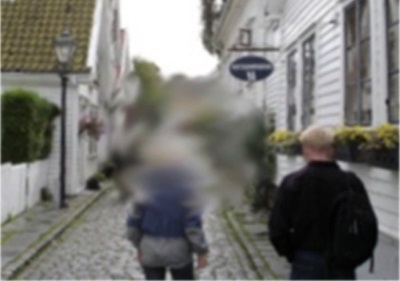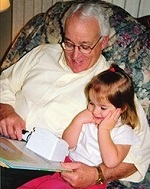What Is Low Vision?
By Maureen A. Duffy, M.S., CVRT
What “Low Vision” Means
Signs and Symptoms of Low Vision
What Causes Low Vision?
What You Should Know about Low Vision
There is Help for Low Vision
Low Vision Services
What “Low Vision” Means
As we age, our eyes change too. Many of these changes in vision can be corrected by glasses or contact lenses. However, if your eye doctor tells you that your vision cannot be fully corrected with ordinary prescription lenses, medical treatment, or surgery, and you still have some usable vision, you have what is called “low vision.”
Having low vision means that even with regular glasses, contact lenses, medication, or surgery, you may find it difficult to perform everyday tasks, such as reading your mail, shopping, preparing meals, and signing your name.
People age 65 and older, as well as African Americans and Hispanics over age 45, are at higher risk of having low vision from diabetes and glaucoma.
Signs and Symptoms of Low Vision
There are many signs that can indicate low vision. For example, even with your regular eye glasses, do you have difficulty:
- Recognizing faces of your friends and relatives?
- Performing tasks that require you to see well up close, such as reading, cooking, crafting, fixing things around the house, or picking out and matching the color of your clothing?
- Performing tasks at work or home because lights now seem dimmer?
- Reading street and bus signs, or the names of stores?
Vision changes like these could be early warning signs of eye disease. Usually, the earlier your problem is diagnosed, the better are your chances of undergoing successful treatment and keeping your remaining vision.
Regular dilated eye exams should be part of your routine health care; however, if you think your vision has changed recently, it’s recommended that you make an appointment with your eye care professional as soon as possible.
What Causes Low Vision?
Among older persons, low vision can result from specific eye conditions such as macular degeneration, glaucoma, and diabetic retinopathy, from a stroke, or from a range of other eye conditions. Low vision may affect your ability to see people’s faces or watch television, to read, to drive, and even to match colors.
It is important to discuss your vision with your eye care professional because many causes of decreased vision can be treatable with medicine or surgery.
What You Should Know about Low Vision
Having “low vision” is not the same as being “blind.” For example, your doctor may tell you that you have a blind or blank spot in the center of your vision that limits your ability to read or see people’s faces; nevertheless, you can still get around using your side (or peripheral) vision:

A simulation of central visual field loss from macular degeneration
Henry Ford Center for Vision Rehabilitation and Research
Or you may have problems seeing well with your peripheral (or side) vision, but still see clearly enough to read the newspaper using your central vision:

A living room viewed through a constricted visual field.
Source: Making Life More Livable. Used with permission.
Find out more about legal blindness.
.There is Help for Low Vision
The important thing is to know that help is available for you. For example, doctors who are low vision specialists can provide you with a low vision exam as a first step in determining how you can use your remaining vision. Often, a low vision specialist can give you recommendations about optical and non-optical devices and vision rehabilitation services that can help you to maximize your remaining vision and learn new ways of doing everyday tasks.
Some examples of helpful devices that a low vision specialist can discuss with you include:

stand magnifier
- illuminated stand magnifiers or electronic aids for reading
- magnifying reading glasses or loupes for seeing the computer screen, sheet music, or for sewing
- telescopic glasses or monoculars for seeing television, faces, signs, or other items at a distance
- glare shields or absorptive sunglasses for reducing glare and enhancing contrast
- adaptive daily living equipment to make everyday tasks easier, such as clocks with larger numbers, writing guides, or black and white cutting boards.
Low Vision Services
Low vision services can include any or all of the following:
- training to use optical and electronic devices correctly
- training to help you use your remaining vision more effectively
- improving lighting and enhancing contrast in each area of your home
- providing a link with a counselor or a support group to help you deal with your feelings related to your changed vision
- learning about other helpful resources in the community and state, such as vision rehabilitation services or free Library for the Blind services.
The Low Vision Provider Directory
The Directory has an expanded listing of low vision service providers to include independent service providers. Previously, the Directory listed only nonprofit low vision service providers. The services offered by agencies under this category are described as follows:
- Evaluation and testing of a person’s vision
- Prescription of appropriate optical devices
- Support, follow-up, and referrals to other appropriate agencies and professionals.
- The provision of nonoptical and optical devices (such as magnifiers, microscopes, telescopes) and training in their use.
If you are a low vision service provider and would like to be included in the Directory, you may fill out a form to sign up. To find out if you are eligible for inclusion in the AFB Directory of Services, see the eligibility requirements.
To learn about low vision services that are available to you in your area, use VisionAware’s Directory of Services to find help.